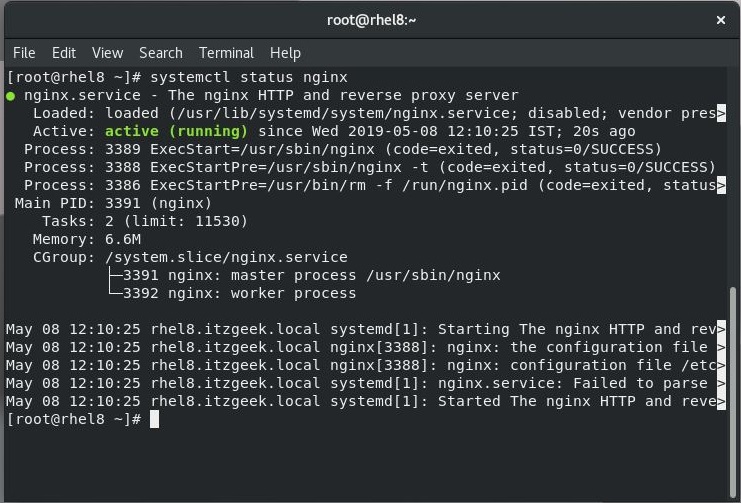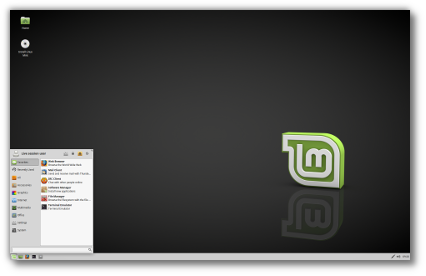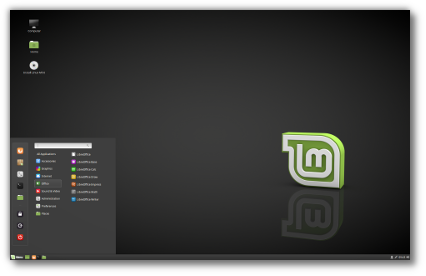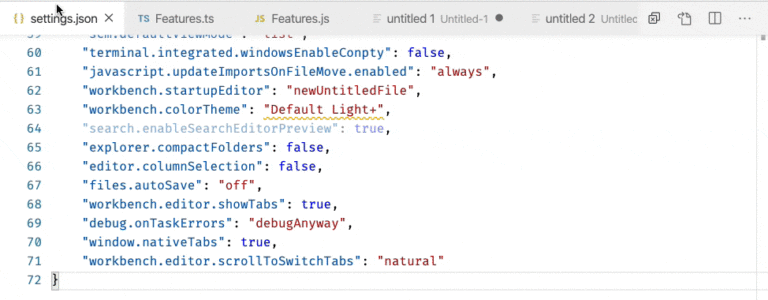The team is proud to announce the release of Linux Mint Xfce.
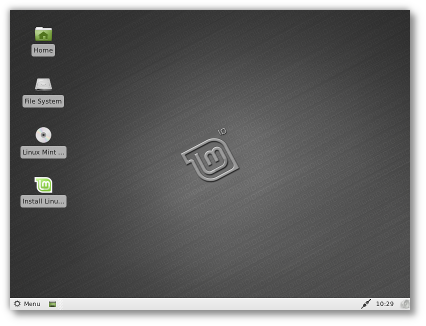
Linux Mint Xfce (201104)
Introduction to Linux Mint Xfce
Contents
- 0.1 Introduction to Linux Mint Xfce
- 0.2 Performance boost
- 0.3 A more mainstream edition
- 0.4 Easier to maintain
- 0.5 FAQ
- 0.5.1 1. Which editions are based on Ubuntu and which editions are based on Debian?
- 0.5.2 2. Is Linux Mint switching to Debian?
- 0.5.3 3. Are other editions going to switch to Debian?
- 0.5.4 4. What about the main edition?
- 0.5.5 5. These switches to Debian seem to take the focus away from the development of the main edition
- 0.6 Important links
- 1 Enjoy!
Linux Mint Xfce is rolling on top of a Debian Testing package base and uses the same repositories as LMDE.
This offers the following advantages to Linux Mint Xfce:
- A huge performance boost
- A continuous flow of updates which allows users to keep their system up to date without waiting for new releases
- A more mainstream desktop and software selection
- An easier maintenance for the team which makes it easier to release in both 32-bit and 64-bit with every LMDE release
Performance boost
One of the most significant improvements is the performance boost given to this edition.
Here are a few figures comparing the memory consumption in the 32-bit live sessions of Linux Mint Xfce and Linux Mint 9 Xfce:
- Mint Xfce: 114 MB RAM (Mint 9 Xfce: 153 MB RAM)
- Mint Xfce + Writer + Calc + Firefox: 177 MB RAM (Mint 9 Xfce + Writer + Calc + Firefox: 212 MB RAM)
- Mint Xfce + Writer + Calc + Firefox + Thunderbird + VLC + Rhythmbox: 220 MB RAM (Mint 9 Xfce + Writer + Calc + Firefox + Thunderbird + Gnome MPlayer + Exaile: 256 MB RAM)
A more mainstream edition
This performance boost allowed us to give Xfce a more mainstream software selection, replacing Exaile with Rhythmox, adding VLC and giving Xfce almost the same software selection as Gnome.
With KDE 4 and Gnome 3 bringing drastic changes to their environments, and with the emergence of Fluxbox and LXDE on the lightweight scene, Xfce represents a nice alternative for PC desktop users who are looking for a light yet full-featured desktop solution. Its relevance is becoming more significant and this is another reason for us to support it in both 32-bit and 64-bit and to give it a mainstream software selection.
We also added mintMenu to this edition as an alternative menu. Be aware that it uses an additional 30MB RAM. You can add it easily by right-clicking on the panel and selecting “Add new Items”->”XfApplet”->”mintMenu”.
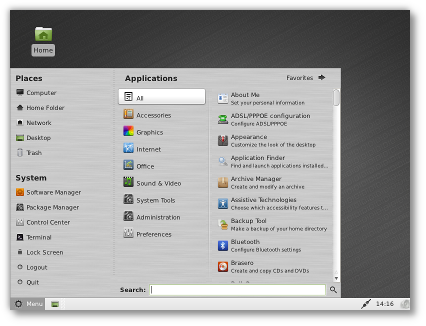
mintMenu in Linux Mint Xfce
Easier to maintain
We’ve been struggling with releasing editions in time. Too often, we’ve seen Linux Mint release its main edition and the Xfce desktop edition, among others, lagging behind and being released far too late in the release cycle. The switch to a rolling package base simplify things tremendously, both for the project and for the users.
Users do not rely on new releases to keep their system up to date, they can do so themselves with a continuous flow of updates.
Bringing the edition to a new release doesn’t involve re-basing it as it did before. It’s now a simple matter of updating the ISO and releasing a snapshot. Similar to LMDE (which will eventually be renamed “Linux Mint Gnome”), this edition will support both 32-bit and 64-bit within a loose release cycle. All Debian-based editions will be released at the same time either to keep up with new features coming in the frozen editions (i.e. Mint 11, Mint 12..), to feature LMDE specific improvements or simply as a snapshot update to their live ISO images.
The importance of feedback in our decision process
We’ve learnt a lot in the past few months and it enabled us to make difficult yet important decisions for this edition. Xfce was the 5th most popular Mint desktop behind the Main edition, “LMDE”, KDE and LXDE. Among its users, a vast majority of people were in favour of a switch to a Debian package base (twice as many as the number of people who were opposed to it). We also noticed only 1% of the users used optic drives that couldn’t read DVD discs. This was relevant as Debian’s language support takes more space than Ubuntu’s and our plan to mainstream this edition meant adding more applications to it.
This is also the first Debian-based release to feature a release candidate.
FAQ
1. Which editions are based on Ubuntu and which editions are based on Debian?
Frozen releases are based on Ubuntu. They carry a version number. For instance, Linux Mint 10 is based on Ubuntu 10.10. The next frozen release will be Linux Mint 11, based on Ubuntu 11.04.
Rolling editions do not carry version numbers. They follow the Debian Testing branch. Because of their rolling nature, they’re receiving continuous updates and their version number never changes (technically it’s always “1″ though we do not mention it since it’s not relevant). Note the absence of version number in “Linux Mint Xfce” for instance, indicating its rolling nature.
An important thing to notice is the fact that rolling editions are in constant evolution but that a particular ISO image is a snapshot of this edition at a particular time. So, though rolling editions do not get outdated, ISO images do. For this reason we use a timestamp for our ISO images, such as “Linux Mint Xfce (201104)”.
2. Is Linux Mint switching to Debian?
No. Linux Mint is Linux Mint, it’s not based on anything per se. It provides different editions which include different upstream components. In regards to package bases and repositories, what’s happening today is that the Xfce edition of Linux Mint is switching two important things:
- It’s switching its package base from a frozen Ubuntu pool to the rolling Debian Testing branch.
- It’s switching its lightweight software selection to a more mainstream one.
3. Are other editions going to switch to Debian?
Fluxbox will switch to Debian but remain minimalist in its default selection.
No decisions were made about LXDE and KDE yet, though switching them to Debian Testing would bring significant advantages to both the project and the users.
4. What about the main edition?
The main edition is and always was our flagship product. It implements the vision we have for Linux Mint and represents our most polished desktop. We do provide other editions and alternative desktops to please particular groups of people within our user base, but our main edition is where our biggest focus remains.
Unless major obstacles or changes meant either Ubuntu or Gnome 3 weren’t compatible with our vision of a perfect desktop anymore, this will not change. We’ll release two major desktops this year: Linux Mint 11 in May and Linux Mint 12 in November, and these two releases are by far the most important events for us at Linux Mint.
Switching editions to Debian Testing simplifies a lot of things and brings considerable advantages to everyone involved, but it doesn’t change our main focus and our commitment to our main edition, which is still featuring Gnome on top of an Ubuntu package base.
5. These switches to Debian seem to take the focus away from the development of the main edition
We’re holding back on two major projects, and sadly they’re likely to be postponed to Linux Mint 12. The main reasons for this aren’t associated with LMDE though. Drastic changes are occurring upstream, whether it’s with Ubuntu pushing for the adoption of its Software Center, switching to Unity and planning to switch away from Xorg, or Gnome moving ahead with Gnome 3, Shell and GTK3… we’re expecting that a lot of things will break and we’re not quite sure how big will the challenges ahead of us be. With this in mind, we’re not in a state of mind where we want to innovate and develop additional features, but in a position where we want to make sure everything works as well as before.
In the long run, switching our alternative desktops to a rolling base also simplifies their maintenance. To users, this means faster updates and synchronised releases. To us, this means more focus on the main edition.
Important links
- Download mirrors: [32-bit] [64-bit]
- Known problems
- Changelog
Download links:
Md5 sum:
- 32-bit: 36c09ee17ad42deea1406191bb95a919
- 64-bit: f076ae4b080bb3a41fc163c6d3c3dc3e
Torrents:
- 32-bit
- 64-bit
HTTP Mirrors for the 32-bit ISO:
- South Africa Internet Solutions
- Japan JAIST
- Taiwan Yuan-Ze University
- Austria Goodie Domain Service
- Belarus ByFly
- Bulgaria nano-box.net
- Czech Republic Silicon Hill
- Denmark klid.dk
- France linuxmint-fr.org
- Germany Copahost
- Germany GWDG
- Germany NetCologne GmbH
- Ireland HEAnet
- Latvia University of Latvia
- Lithuania Atviras kodas Lietuvai
- Netherlands Tuxis Internet Engineering
- Poland Polish Telecom
- Portugal CeSIUM – Universidade do Minho
- Sweden DF – Computer Society at Lund University
- Switzerland SWITCH
- Turkey Linux Kullanicilari Dernegi
- United Kingdom Netrino
- Canada University of Waterloo Computer Science Club
- USA DoctorServer.by
- USA Linux Freedom
- USA Linux Mirrors
- USA Secution, LLC.
- USA Yellow Fiber Networks
- Australia ‘Yes’ Optus Mirror
- Australia AARNet
- Australia Western Australian Internet Association
- Indonesia idREPO
- Brazil Universidade Federal do Parana
HTTP Mirrors for the 64-bit ISO:
- South Africa Internet Solutions
- Japan JAIST
- Taiwan Yuan-Ze University
- Austria Goodie Domain Service
- Belarus ByFly
- Bulgaria nano-box.net
- Czech Republic Silicon Hill
- Denmark klid.dk
- France linuxmint-fr.org
- Germany Copahost
- Germany GWDG
- Germany NetCologne GmbH
- Ireland HEAnet
- Latvia University of Latvia
- Lithuania Atviras kodas Lietuvai
- Netherlands Tuxis Internet Engineering
- Poland Polish Telecom
- Portugal CeSIUM – Universidade do Minho
- Sweden DF – Computer Society at Lund University
- Switzerland SWITCH
- Turkey Linux Kullanicilari Dernegi
- United Kingdom Netrino
- Canada University of Waterloo Computer Science Club
- USA DoctorServer.by
- USA Linux Freedom
- USA Linux Mirrors
- USA Secution, LLC.
- USA Yellow Fiber Networks
- Australia ‘Yes’ Optus Mirror
- Australia AARNet
- Australia Western Australian Internet Association
- Indonesia idREPO
- Brazil Universidade Federal do Parana
Enjoy!
Mint Xfce isn’t “trying” to be lightweight anymore. It’s snappier and uses less resources, while becoming more mainstream and offering more popular applications. We hope you’ll enjoy this new release. Thank you for using Linux Mint.

